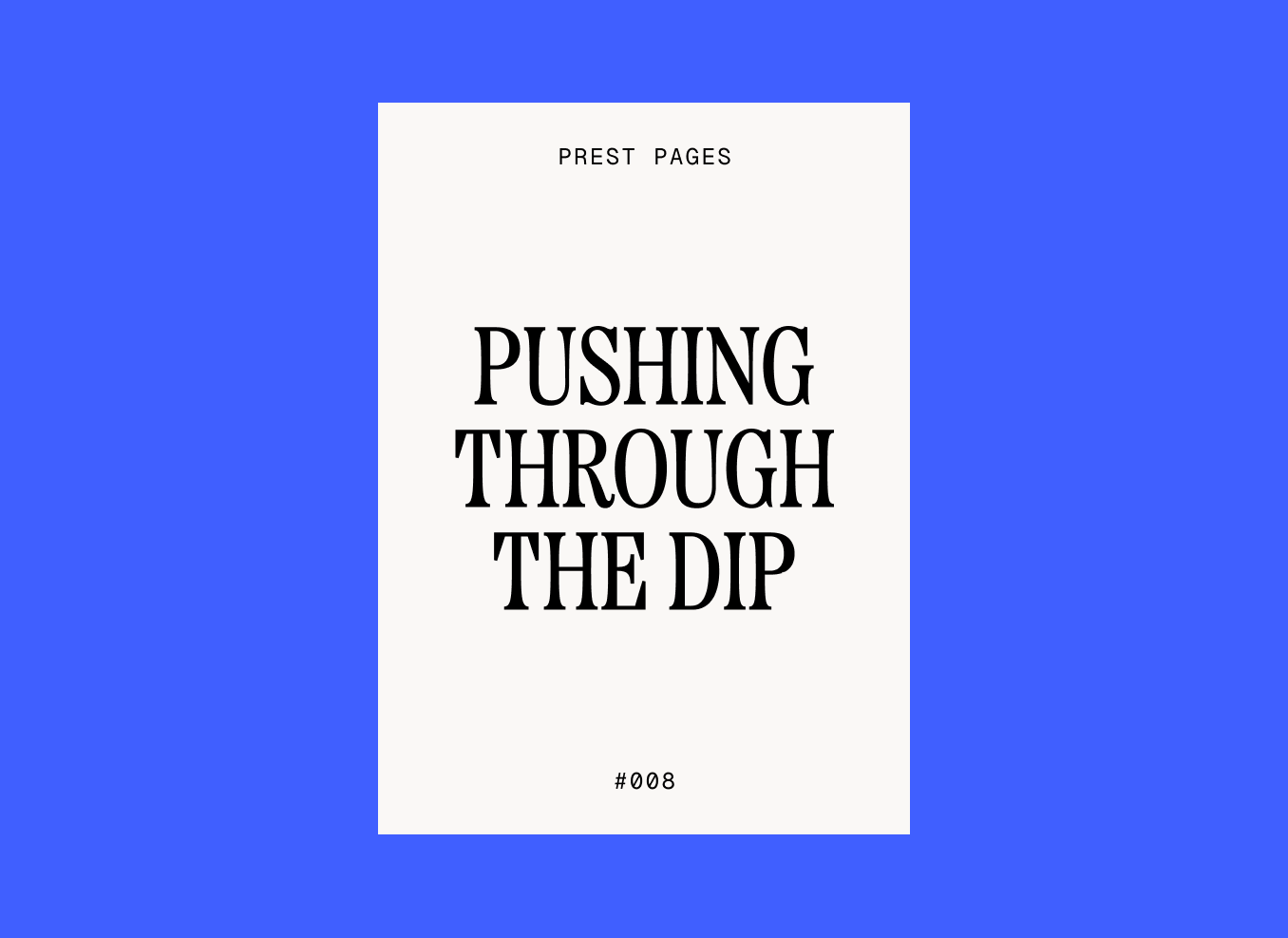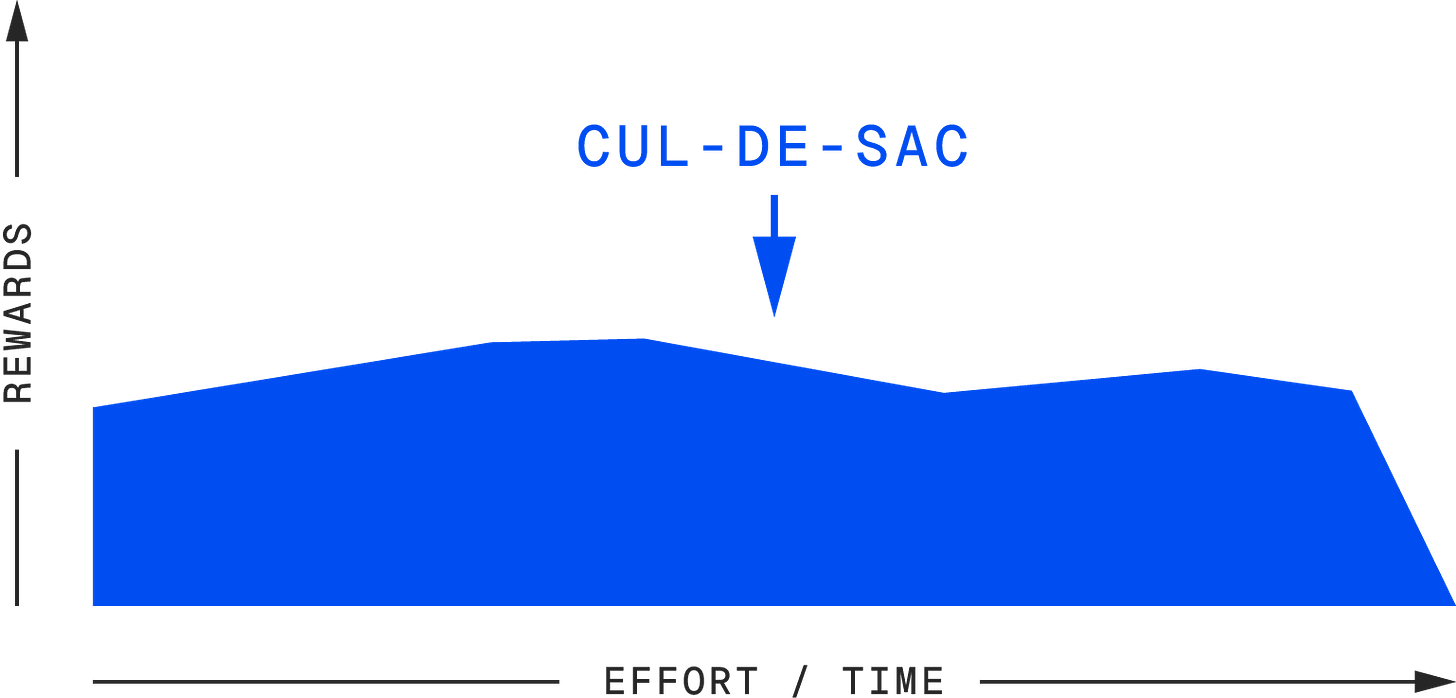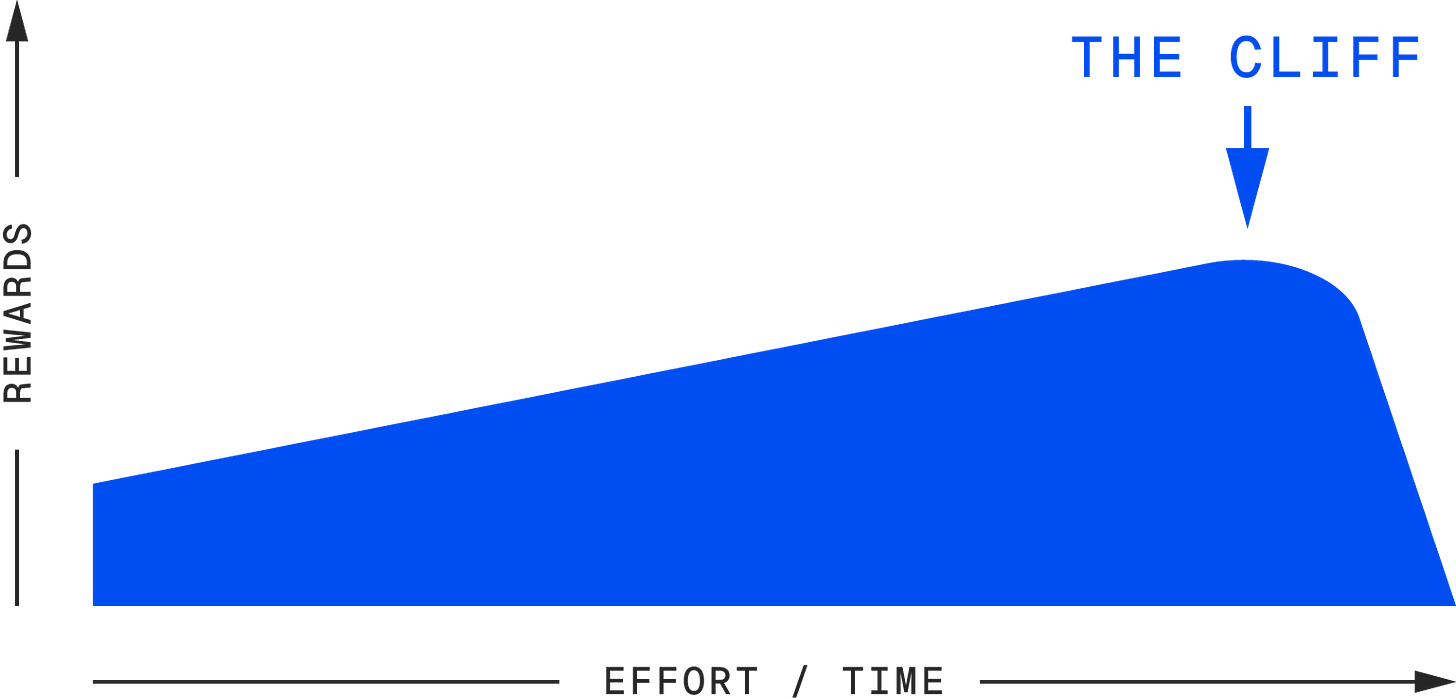Pushing Through the Dip
Page 8: Knowing when to quit and when to stick
We’re taught in school that winners never quit. And while that’s kind of true, the reality is that winners quit all the time—they just quit the right things. I was reading Seth Godin’s The Dip on a train down to London this week. Here’s what I learned:
I’m a serial hobbyist. Pouring candles, casting concrete, designing fonts, blending perfumes—if it sounds interesting, I’ll try it. But no matter how excited I am at the start, eventually, I hit that point where things get hard, and I quit. This, I’ve learned, is “The Dip”.
Anything worth doing has a dip. It’s the long, often frustrating gap between starting something and becoming great at it. When you hit The Dip, you have to decide: push through, or quit? Most people quit. That means The Dip is a gatekeeper. It creates scarcity, and scarcity creates value. It’s worth more if no one’s doing it.
I thought about all the things I’d quit in The Dip, and hoped PREST wouldn’t be another. Then I realised—I don’t always quit. Before I hopped from hobby to hobby, I fell in love with bookbinding. The only reason I stopped was because life got in the way. A full-time job, new flat, no space. I’ve spent a lot of time and money trying new hobbies, quitting each one at The Dip, instead of just returning to bookbinding. Now? I’m committing to quitting everything else and going all in on this one passion. If you quit the right things, and focus on that ONE thing, who knows where it’ll end up.
Beware of cul-de-sacs and cliffs
Godin warns that not everything is worth pushing through.
The Cul-de-Sac
A cul-de-sac is a dead-end. You’re putting in effort, but no matter what you do, things just won’t get better. It’s not going to lead anywhere meaningful, no matter how hard you try. Maybe you’re in a job that has no room for growth, or pursuing a hobby that doesn’t light you up anymore. In this case, you’re not in a dip; you’re in a cul-de-sac. And the worst part? A cul-de-sac can be comfortable. You can keep plodding along, making just enough progress to justify sticking with it, but deep down, you know it’s not going anywhere. That’s why quitting a cul-de-sac is crucial. It frees up your time and energy to focus on something with real potential.
The Cliff
Then there’s the cliff. A cliff feels exciting at first, but the further you go, the worse it gets—until you hit a point where you’re in free-fall. Imagine a career path that starts out full of promise, but eventually leads to burnout or exhaustion. Cliffs are dangerous because they often disguise themselves as opportunities, and by the time you realise it’s a cliff, you’ve invested too much. Quitting at the right time here isn’t just smart, it’s necessary. The longer you hang on, the more it costs you (in time, energy, or your mental health).
So, if you’re stuck in your own dip, whether it’s a hobby, work, or a relationship, the rough patch could be a sign to quit, or it might be a sign to keep going. So, ask yourself—are you in a dip, a cul-de-sac or about to fall off a cliff? Now’s the time to figure it out. Because strategic quitting isn’t just okay—it’s essential. Now go ahead and quit. Or stick. Just make sure you're doing it for the right reasons.
Until next time,
Callum







